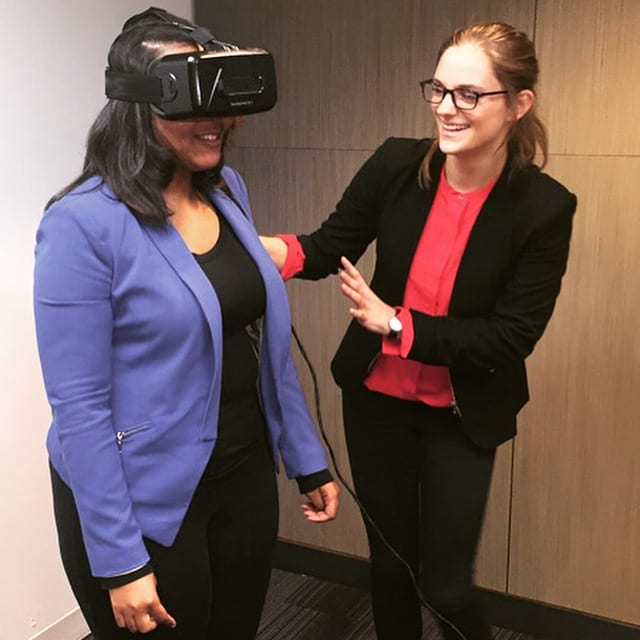 Fear of the unknown is a real and tangible thing and we see it all the time. But, in the ever-changing world of communications, this is a fear we must embrace. This is a fear we must overcome. The digital revolution has changed the way we communicate, the way we digest information and the way we form relationships with brands. There are more apps, more social channels and more ways to connect available now than when you started reading this blog post, and anyone worth their weight in bitcoins will tell you that in 10, five, even two years from now, our technological landscape will look vastly different.
Fear of the unknown is a real and tangible thing and we see it all the time. But, in the ever-changing world of communications, this is a fear we must embrace. This is a fear we must overcome. The digital revolution has changed the way we communicate, the way we digest information and the way we form relationships with brands. There are more apps, more social channels and more ways to connect available now than when you started reading this blog post, and anyone worth their weight in bitcoins will tell you that in 10, five, even two years from now, our technological landscape will look vastly different.
To produce break through work you need to be able to look that fear of the technological unknown in the eye and say “Hey! You have no power here!” You need to be the one who innovates.
Ketchum recently invited TrendExplorer’s Innovation Expert Franziska Krauskopf to introduce us to the customer of the future. And according to Franziska, there are five technology-driven trends happening right now that can help us understand what our future customer will want, need and demand (click to tweet).
1. Immersive Experience
If you’ve seen any of the Iron Man movies or watched season 7 of Parks and Recreation (what was that anyway?), you’ve seen how the film and television industry depicts the advancement of technology. Tony Stark has a computer that he can manipulate by moving his hands, he can bring 3D models of his suit to life in mid-air and add or subtract components. In the movies, the technology of the future always seems far-fetched. But, what if I was to tell you that we’re actually not that far off from having access to Tony Stark-like technology—what TrendExplorer identifies as a vital component of Augmented Reality.
Munich-based computer vision company Metaio, has already begun to test Thermal Touch prototypes that turn every surface into a touch screen. Imagine customers being able to click on print ads and buy without the use of a smart phone? “The internet is looking to merge seamlessly with the physical world, and marketers need to be ready,” says Krauskopf.
2. Coordination Economy
We’ve all heard of the Sharing Economy, but “In the future,” says Krauskopf, “it will be more of a coordination economy. A collaborative experience through community based services.” Examples of this trend can be seen in Uber’s release of their API, the development and adaptation of Mirrativ live streaming app, and Fintech Group’s “Social ATM” where users can withdraw cash from other users by transferring the money from their personal bank account.
3. Contextual Adaptation
“Moving forward, there will need to be a perfect orchestration of content, person, time and place,” explains Krauskopf. Customers will expect companies to not only know who they are, but where they are—and tailor content to meet them there. In 2015, Brazilian loyalty program Smiles released an interactive book that changes based on your geographic location. As the novel progresses, the story makes references to the city or place the reader happens to be in.
4. Chat OS
Get your thumbs ready—because the future is all about Chat. In the last four years we’ve seen chat/messaging apps explode in popularity, most notably WeChat in China. This literal all-in-one app has your everyday average chat feature, but also allows users to hail a cab, meet people around them, send money, order food, play games, order movie tickets, follow celebrity news, access fitness tracking data and much more. Although it’s adaption in western countries has not been quite so rapid, WeChat enjoys 600 million monthly active users among its one billion registered accounts across Asia. Smart American businesses have been monitoring the chat trend and adapting their communications strategy to stay ahead of the curve.
5. Artificial Support
Remember Ask Jeeves? Remember how everyone thought, “Cool! A virtual butler who can answer any question!” Then came Google, and poor Jeeves was out of a job. While I’m not naïve enough to think that Google will be any less relevant as we journey into the future, the new virtual assistant is not only going to have to be capable of telling you how tall Leonardo DiCaprio is, but also anticipate your purchasing needs and proactively manage your calendar. One example is the Snip Snap App.
Extreme coupons cutters beware (or rejoice)! In 2015, Snip Snap introduced us to Scout, the first virtual assistant to help you find real-time deals as you’re shopping. The app also features a chat feature that lets the user personalize the experience. Scout then searches online coupons, aggregates prices from thousands of online stores and any mobile rebates from other apps. Scout also comes equipped with image-recognition technology to identify any product at any time.
The future is now, and the communicators willing to embrace and experiment with these new tools and platforms will more than likely be the ones better equipped to thrive in this not-so-distant technological landscape.